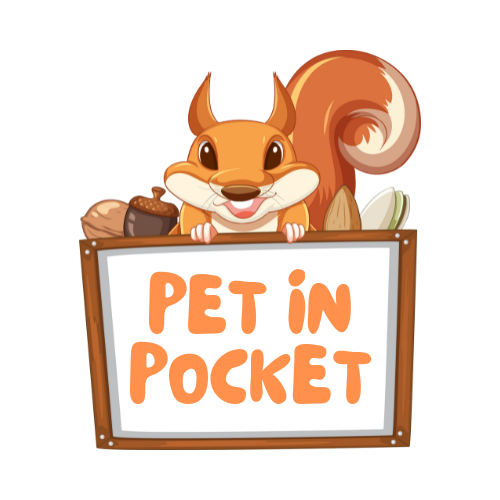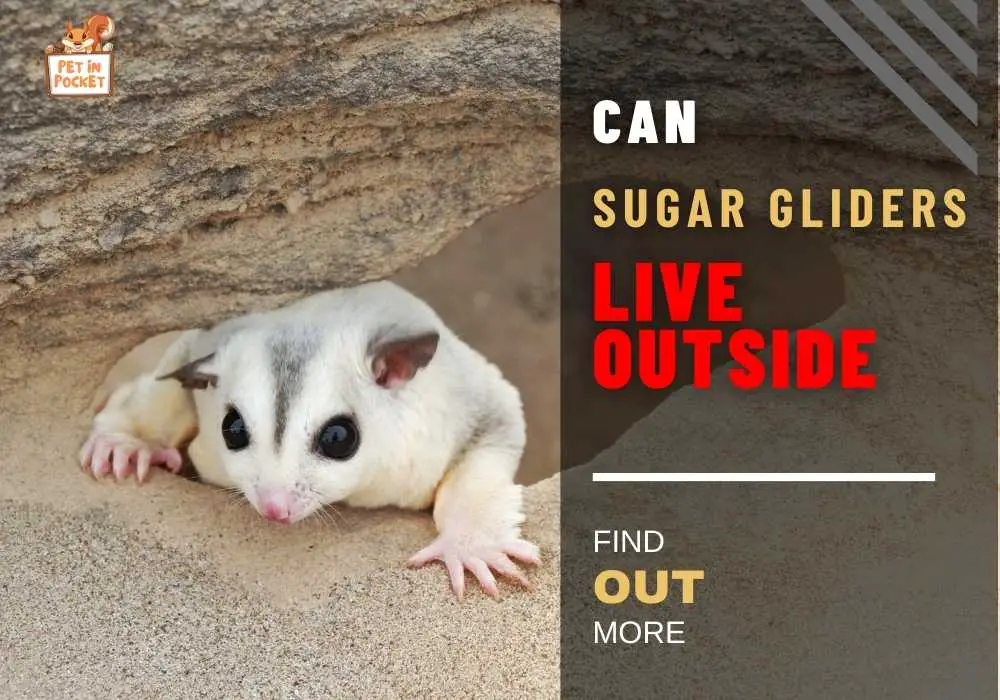Sugar gliders have gained popularity as household pets because of their large eyes and gliding ability. Responsible pet owners find these small, social animals delightful companions due to their curious and friendly nature. In this virtual discussion, we will delve into the behavior of sugar gliders and provide insights into their origin, socialization, bonding, and care.
Identifying Sugar Glider behavior is essential for a healthy and happy relationship, whether you are a current sugar glider owner or considering adding one to your family.
Table of Contents
Sugar Glider: A Comprehensive Overview
Sugar gliders, known scientifically as Petaurus breviceps . They are active nocturnal animals. They belong to the same family as kangaroos and are social creatures that form close-knit groups in the wild. In recent years, these captivating animals have become popular pets in the United States due to their unique gliding ability and affectionate and playful nature. Let’s take a closer look at these fascinating creatures.
The Origin of Sugar Gliders
Sugar gliders are marsupials that naturally occur in Australia and New Guinea. They are small, arboreal creatures with a gliding membrane that allows them to travel effortlessly between trees. In their natural habitat, sugar gliders form social groups and are skilled at navigating the forest canopy with their gliding ability, making them excellent climbers and jumpers.
Their small size, ranging from 6 to 8 inches in length, and their bonding behavior have made them a sought-after pet species in the United States. The journey of sugar gliders from their native land to becoming household pets can be attributed to the efforts of dedicated breeders and pet enthusiasts who have successfully adapted their care to captivity, ensuring their health and well-being.
Are They Rodents or Pets?
Despite their appearance, sugar gliders are not rodents. They belong to the marsupial family, which includes kangaroos, koalas, and opossums. Unlike rodents, sugar gliders have scent glands and a gliding membrane, both of which are unique to their species. These features, along with their social and bonding behavior, make them excellent pets and companions for human families.
As pets, sugar gliders require proper care and socialization to thrive. They are known for their curious and friendly nature, and with proper bonding, they can form strong relationships with their human owners. It’s important to note that sugar gliders have specific needs and should not be mistaken for rodents when it comes to their care and requirements.
Will sugar gliders kill each other?

Sugar gliders are social creatures and typically get along well with other gliders. However, introducing a single glider to a group of gliders may require a bonding process to ensure compatibility. It is important to monitor the sugar gliders during the introduction process to prevent any aggressive behavior or conflicts.
In a natural group, sugar gliders have a social hierarchy, with dominant members exhibiting control over resources and territory. Adult male sugar gliders, in particular, may display dominant behavior, but it rarely leads to serious harm. With proper socialization, bonding, and a suitable enclosure, conflicts among sugar gliders can be minimized.
Socialization and bonding are essential aspects of sugar glider care. By providing a comfortable and secure environment, along with proper socialization, sugar gliders can happily coexist with other gliders and human companions.
Are sugar gliders good pets?
Sugar gliders can make wonderful pets for the right people. However, they require a lot of care and attention to thrive in captivity. They are social animals that need plenty of interaction and mental stimulation. It’s important to research their specific needs, such as diet, enclosure size, and exercise requirements, before deciding if they are the right pet for you.
Decoding the Behavior of Sugar Gliders
Sugar gliders are known for their unique behavior. These small marsupials are social animals and form strong bonds with their companions. Understanding sugar glider care is essential to ensure their well-being. Additionally, intact males sometimes exhibit aggressive behavior and may require special attention. As escape artists, sugar gliders need a secure environment, with cages at least 36 inches tall to prevent accidents. Regular visits to the vet for vaccinations and check-ups are crucial for their health.
Typical Daily Activities of a Sugar Glider
During the day, petaurus breviceps are often asleep, as they are nocturnal creatures. With their natural gliding ability, they move between trees using their gliding membrane. Young sugar gliders are quite playful and inquisitive, forming bonds with their human companions while exploring their surroundings. To ensure their comfort and security, it’s essential to provide them with fleece items, a suitable enclosure, and hiding spots.
Additionally, daily care for pet sugar gliders includes nail trimming and a proper diet to prevent obesity and ensure overall well-being.
Understanding Their Bonding Behavior
Forming close-knit relationships, petaurus breviceps, female sugar gliders nurturing joeys in their pouch, spending quality time to build trust, creating a secure environment, and understanding the bonding process are crucial for a healthy and happy relationship with sugar gliders. Providing companionship and care, including sugar glider care from a vet, is essential for their well-being. These small marsupials, resembling tiny kangaroos, are known to be escape artists, so it’s important to take precautions. Understanding their bonding behavior is key to fostering a strong and loving bond with these delightful companions.
Do sugar gliders and dogs get along?

Sugar gliders and dogs can coexist peacefully with proper supervision and socialization. Introducing them requires a slow, controlled process. Dogs must be trained to interact gently for the safety of sugar gliders. Providing a secure enclosure is crucial when living with dogs. With socialization, they can form a harmonious companionship.
Sugar Glider Housing and Environmental Needs
Ensuring that the housing environment provides ample space for the petaurus breviceps to glide and play is crucial. Properly sized cages, at a minimum of 36 inches tall and 24 inches wide, accommodate their active lifestyle.
Additionally, sugar glider care involves keeping them in pairs or small groups, except for intact males who should be housed separately. Providing plenty of branches and ledges in the cage is essential, as sugar gliders are natural escape artists.
Ideal Cage Conditions for Sugar Gliders
To ensure the well-being of petaurus breviceps, it’s essential to provide a roomy enclosure that allows for gliding and climbing. Use fleece items to create a cozy environment, and install water bowls or bottles for hydration. Proper ventilation and temperature regulation are crucial, along with offering an array of toys for mental stimulation. It’s also important to seek sugar glider care from a knowledgeable vet, as intact males can be territorial and may exhibit aggressive behavior.
Lastly, ensure the enclosure is escape-proof, as sugar gliders are known to be escape artists.
Temperature Requirements for Sugar Gliders
In caring for Petaurus breviceps, maintain a habitat temperature of 75-80 degrees Fahrenheit. During colder months, use a heat lamp or heater to provide warmth, ensuring the comfort of these small, nocturnal marsupials.
Avoid exposing sugar gliders to extreme temperatures, as they are sensitive creatures and can easily get stressed. Proper temperature regulation is essential in their care to promote their well-being and vitality.
How to get a sugar glider out of hiding?
To encourage a hiding sugar glider to come out, speak softly and offer a treat. Create a secure bonding pouch for comfort and gently coax the glider out with patience. Avoid sudden movements or force to prevent stress.
Do sugar gliders have pouches?

Yes, female sugar gliders have a unique pouch where they carry and nurture their young joeys. This pouch is an essential feature of their biology, providing a safe and nurturing environment for the development of the joeys. Male sugar gliders do not have pouches since they do not participate in caring for the young.
Handling and Interacting with Sugar Gliders
Sugar gliders are highly social animals. They are delicate and should be handled with care, especially intact males prone to territorial behavior. Understanding sugar glider care is crucial, including regular vet check-ups and vaccinations. These small creatures weigh between 3-5 ounces and measure 5-6 inches in length. It’s important to recognize their behavioral clues, such as discharge or signs of obesity. Remember, sugar gliders are escape artists, so always monitor their interactions with other pets closely.
How to Safely Handle Your Sugar Glider?
When handling your sugar glider, it’s important to mimic their natural gliding motion by supporting their hind legs. Approach them calmly to prevent stress, and consider using a bonding pouch to provide a sense of security. Creating a safe environment for interaction allows your sugar glider to explore and build trust through positive experiences. This gentle approach helps in establishing rapport and strengthening the bond with your pet.
Reading Their Behavioral Clues During Interaction
Observing a sugar glider’s body language and vocalizations is crucial for understanding their emotions. By paying attention to their response to treats, toys, and interactions, you can gauge their comfort level.
It’s important to recognize signs of stress or fear and adjust your approach accordingly. Engage with them in a calm and reassuring manner to build a positive bond. Learning to interpret their behavioral cues will enhance your communication and interaction with these fascinating creatures.
Can sugar gliders sleep with human?

Allow sugar gliders to rest in a bonding pouch near your body, fostering comfort and connection. Create a secure sleep environment for their well-being, minimizing disturbances. Cherish peaceful bonding moments during their slumber. Respect their natural sleep patterns and provide a tranquil setting for uninterrupted rest.
Conclusion
In conclusion, understanding sugar glider behavior is crucial for their overall well-being and for building a strong bond with them. These adorable creatures have unique needs and behaviors that require attention and care. It’s important to provide them with a suitable environment, including an ideal cage setup and temperature conditions. Interacting with sugar gliders should be done with caution and respect for their behavioral cues.
Remember, they are social animals that require companionship and mental stimulation. By learning about their daily activities and bonding behavior, you can create a positive and enriching experience for both you and your sugar glider.
So, embrace the joy of having these amazing little pets and enjoy the wonderful journey of understanding their behavior.
Here are 5 frequently asked questions about sugar gliders with their answers:
1.What should I feed my sugar glider?
Answer: Sugar gliders require a diet that consists of fresh fruits, vegetables, and protein sources such as insects, eggs, and cooked chicken. Commercially available sugar glider diets can also be used as a supplement.
2.How often should I clean their cage?
Answer: Sugar gliders are clean animals and require a clean environment. Their cage should be cleaned at least once a week, and their food and water dishes should be cleaned daily.
3.Do sugar gliders need toys?
Answer: Yes, sugar gliders require mental stimulation and toys are a great way to provide that. Toys such as ropes, ladders, and pouches help keep them active and entertained.
4.Can sugar gliders be kept alone?
Answer: No, sugar gliders are social animals and require companionship. It’s recommended to keep them in pairs or small groups.
5.How can I bond with my sugar glider?
Answer: Bonding with sugar gliders takes time and patience. Spend time with them daily, offer treats, and allow them to become comfortable with you before attempting to handle them. Gradually increase the amount of






Leave a Reply